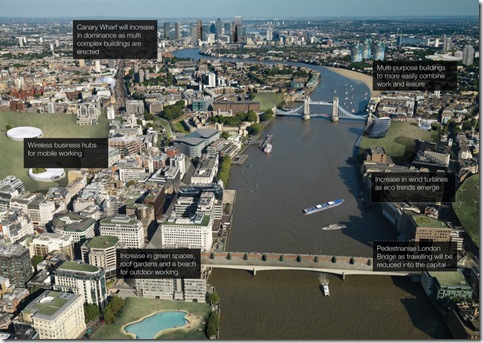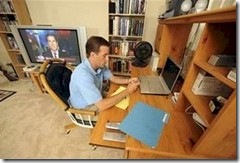Microsoft UK recently released a study done by The Future Laboratory’ called ‘Microsoft: Work and Mobile Cities’ which looked at how the trend in mobile and remote working would impact the actual landscape around us.
Bill Gates used to quote the line ‘people always over estimate the impact of technology shifts over a two year period, but under-estimate them over a ten year period’. My explanation of this syndrome is that people often lose sight of the broader ‘ecosystem’ dependencies and obstacles. They see a demo of some nifty technology fresh from the lab and expect to see it in people’s hands across the land overnight, but they forget the dependencies on producing at scale, distributing the product, training people how to use it, often the contributory components like connectivity. Conversely, once those elements have sorted themselves out over a bit longer period of a few years, people can see the direct uses and impacts, but often neglect to consider the secondary and tertiary effects that those uses then foster.
The ‘Microsoft: Work and Mobile Cities’ report attempts to look out beyond the current trends and gadgetry and try to extrapolate to this ‘beyond ten year’ horizon. One of the notable longer term effects anticipated is how the work practices interplay with the environment. Not the carbon footprint and saving the planet environment. But the cityscape environment in which we live and work. The study actually has crafted artist visualisations of London, Brighton, Cardiff, Edinburgh, Manchester, Newcastle, Plymouth and Birmingham.
In much the same way that Service Oriented Architecture is changing the topology of the conventional IT’s spaghetti of static and complex systems. Dynamic work is similarly rewriting the inner working and layout of the urban schematic and Future Laboratory has laid out an intriguing sketch of how this might evolve.




